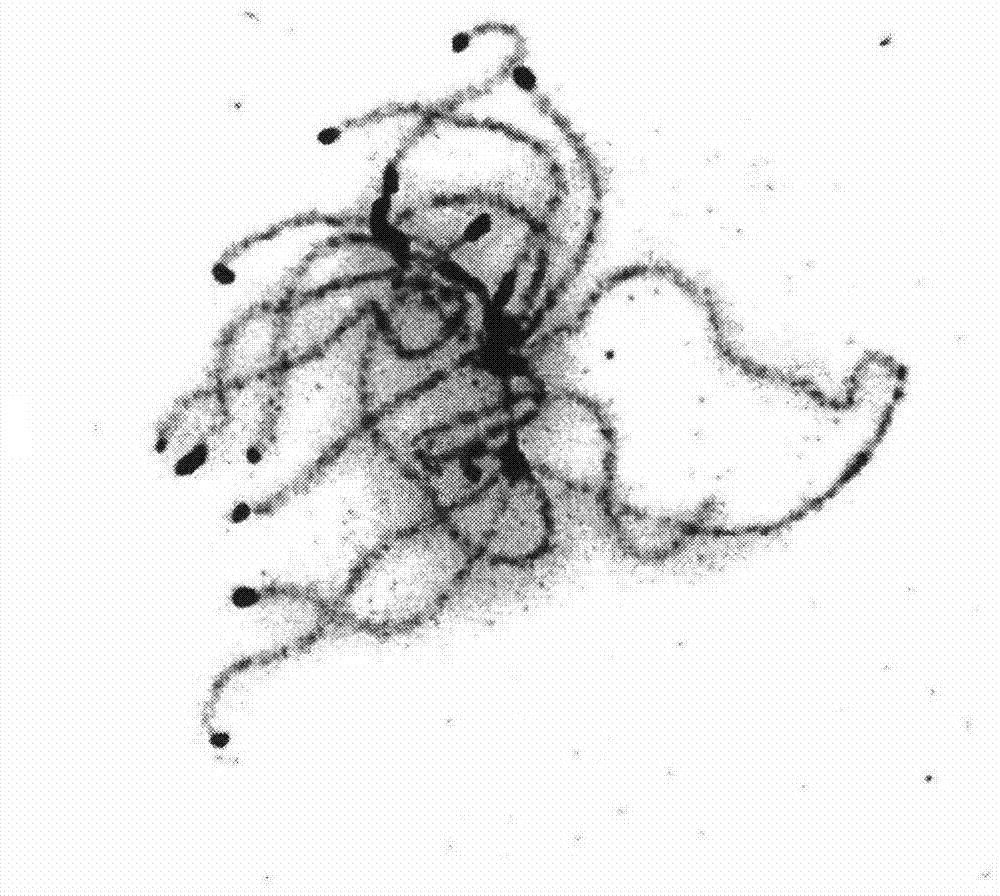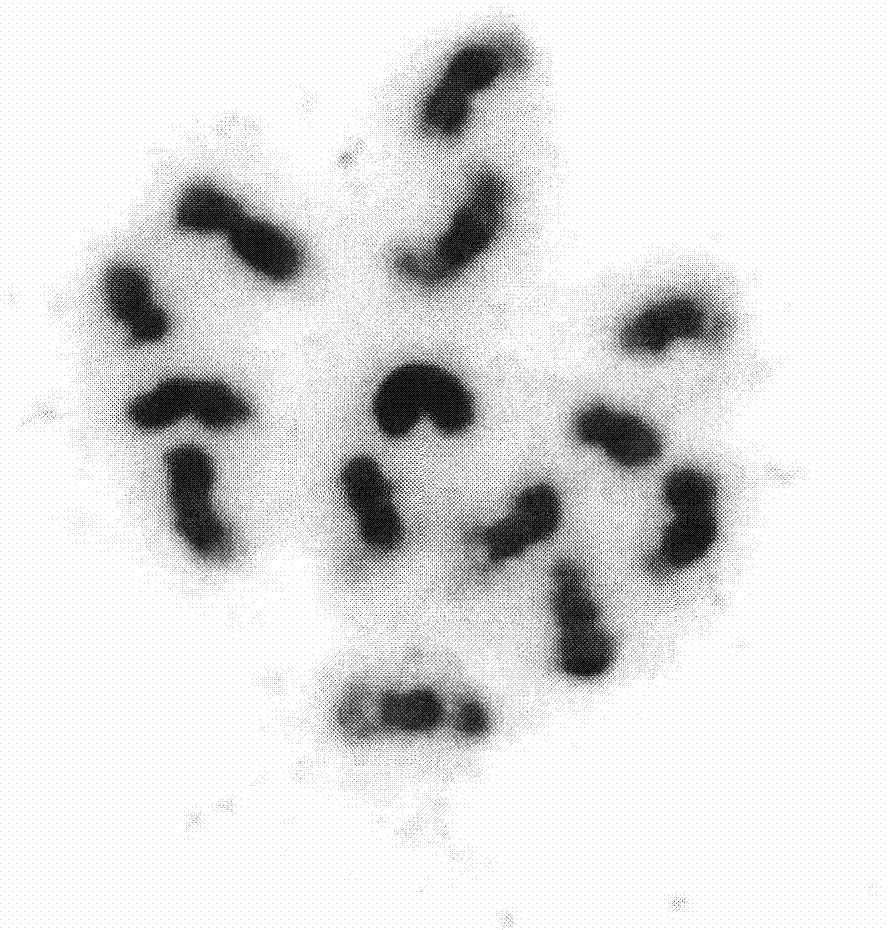Fluorescence in situ hybridization method for high resolution chromosomes of cucumber
A fluorescence in situ hybridization, high-resolution technology, applied in the field of fluorescence in situ hybridization, can solve the problems of adverse effects of target signal detection, low signal recognition rate, and high chromatin concentration, and achieves easy detection, accelerated experimental process, The effect of improving accuracy
- Summary
- Abstract
- Description
- Claims
- Application Information
AI Technical Summary
Problems solved by technology
Method used
Image
Examples
Embodiment Construction
[0026] The implementation procedure of cucumber high-resolution chromosome fluorescence in situ hybridization of the present invention comprises:
[0027] (1) Preparation of materials: Take flower buds of appropriate size at the early stage of cucumber flowering or full flowering stage, put them into the E:G (ethanol:glacial acetic acid) fixative solution with a volume ratio of 3:1 and fix them for one week, and then remove the flower buds after one week. Change to 70% ethanol and set aside.
[0028] (2) Chromosome slides at pachytene stage: use enzymatic hydrolysis to remove the wall and low osmosis method for chromosome slides, check under a common microscope, and select high-quality chromosome slides with good shape and no overlapping with each other for future use.
[0029] (3) Labeling of plasmid DNA probes: Plasmid DNA was extracted by alkaline lysis, and labeled with Dig-Nick Translation Kit and Biotin-Nick Translation Kit.
[0030] (4) In situ hybridization: Selected ...
PUM
 Login to View More
Login to View More Abstract
Description
Claims
Application Information
 Login to View More
Login to View More - R&D
- Intellectual Property
- Life Sciences
- Materials
- Tech Scout
- Unparalleled Data Quality
- Higher Quality Content
- 60% Fewer Hallucinations
Browse by: Latest US Patents, China's latest patents, Technical Efficacy Thesaurus, Application Domain, Technology Topic, Popular Technical Reports.
© 2025 PatSnap. All rights reserved.Legal|Privacy policy|Modern Slavery Act Transparency Statement|Sitemap|About US| Contact US: help@patsnap.com



